Vacuum tubes seems to be primitive and considered to no longer in existence stuffs. But trust me there are still places where Vacuum tubes are considered pretty handy. On that basis i have come up with a design of a simple Vacuum tube amplifier which is capable of delivering output power of 17 Watts. Let’s get into the specifications and working of this circuit
SPECIFICATIONS:
- Input Sensitivity – minimum level 0.2V. At higher levels you can adjust with the negative feedback.
- Output Power – 17Wrms
- Frequency Response – Depends mainly on the output transformer. It can be good from 40Hz-15KHz
- Efficiency – Around 60%
WORKING OF VACUUM TUBE AMPLIFIER:
FIRST STAGE:
A vacuum tube amplifier consisting of 3 stages. The first stage is 1/2 of the widely used dual ECC83/12AX7 triode and works as a voltage amplifier. This is necessary because power valves often have considerably low gain and the output voltage needs to reach quite high levels before the impedance matching transformer steps it down. The voltage amplifier works in a simple Common Cathode mode and provides an open loop gain of around 35 times. The negative feedback restricts the maximum gain to appropriate levels to not overdrive the power stage.
SECOND STAGE:
The second stage is a Cathodyne Phase Splitter. It takes an input signal and produces two symmetrical signals at anode and cathode, but at 180 degrees out of phase. This stage has no voltage amplification but serves the sole purpose of driving the two output tubes in 180 degrees out of sync. This way when one tube must increase current conduction, the other one decreases it, at the same amount. The output tubes are 2xEL84 bottles, which can provide up to 17W of power into a 8kohm load. Now there is a little trick I did here. In general vacuum tubes are becoming obsolete and you can salvage has been already extensively used.
Most tubes (except NOS) are pretty much worn out these days. That means that perfect balancing will be unbelievably hard to to, unless you buy matched pairs. So the workaround is to use Constant Current Sources at the cathodes, to even out the currents through the tubes, thus matching them in the eyes of the output transformer. You need to AC bypass the constant current sources with a large capacitor, in order to counteract any pulling of the cathode voltage. 1mF is a minimum value. Feel free to use anything up to 4.7mF. Despite the fact that the constant current sources are made from transistors, this does not make the circuit a hybrid, Because the transistors do not handle any of the audio signal, but provide steady biasing for the tubes.
THIRD STAGE:
The last and most important part is the output transformer. I salvaged mine from an old tube radio, you can go ahead and buy one, it needs to have primary impedance Ra-a 8k and a secondary impedance of 4ohm (or whatever load you require). The two impedance’s are bound by the reflected impedance formula Zpr = (PrT^2/SecT)xRl Primary turns squared divided by the secondary turns and then multiplied by the load. You must be careful from which end of the output you take the feedback, because from one end its negative (the one we need) and from the other end its an uncontrollable positive feedback which may damage the power tubes.
The power supply doesn’t need to be perfectly filtered. Because the preamp tubes, where the filtering is especially needed, are sufficiently filtered by the two RC circuits at the supply rail. And as for the power tubes, the transformer itself acts as a choke and suppresses any variations in the power supply the tubes receive. Now this is important. Feed with smooth DC to the tube heater filaments must be for best results.
You can balance your AC by creating a virtual ground with the help of a 56ohm 1/2W trimmer connected between the two terminals and the wiper connected to ground. There are two heater configurations you can use. The ECC83 is designed to work with either 6.3V filament voltage or 13.3V. I suggest you work with 13.3V, because then the filaments are in series. You can just ground the center point (pin 9) and create the virtual ground there. In this scenario you must wire the EL84 tubes in series too.
Try this out and keep me posted on the results. Leave a comment if you any queries regarding this, Happy DIY 🙂

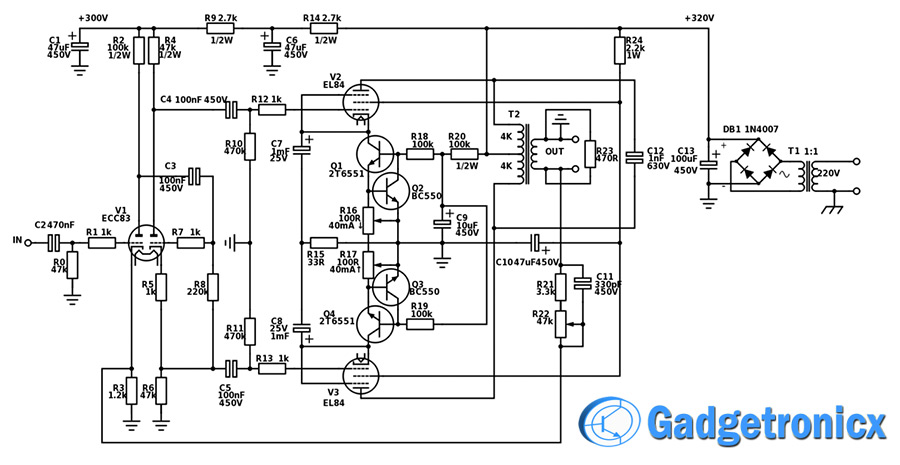
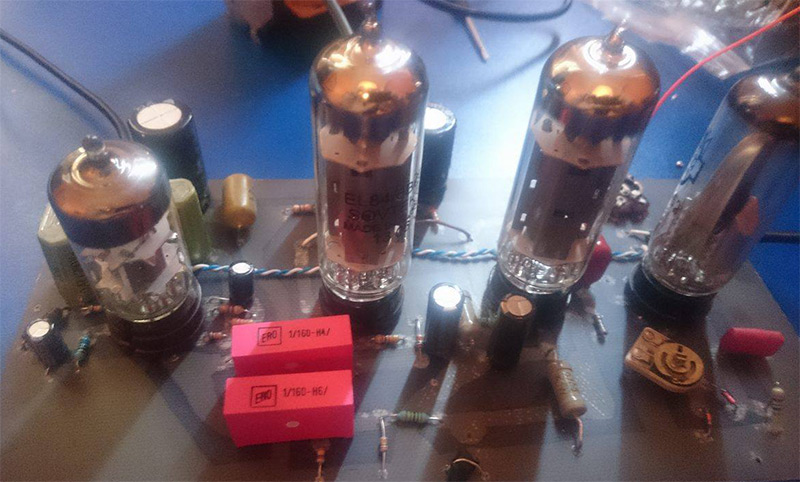
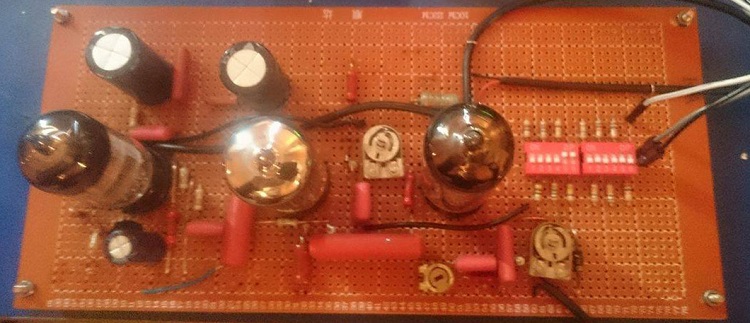
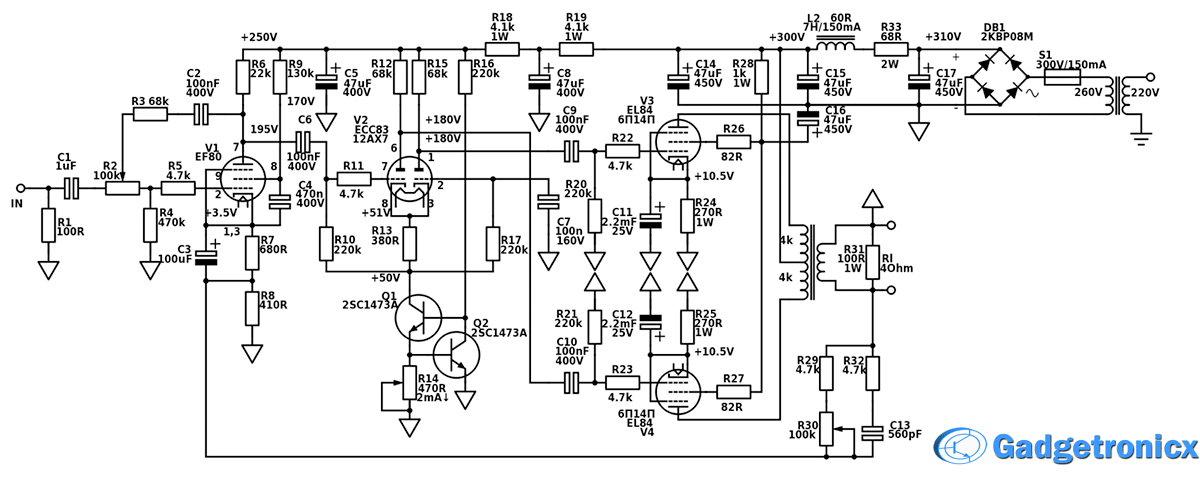
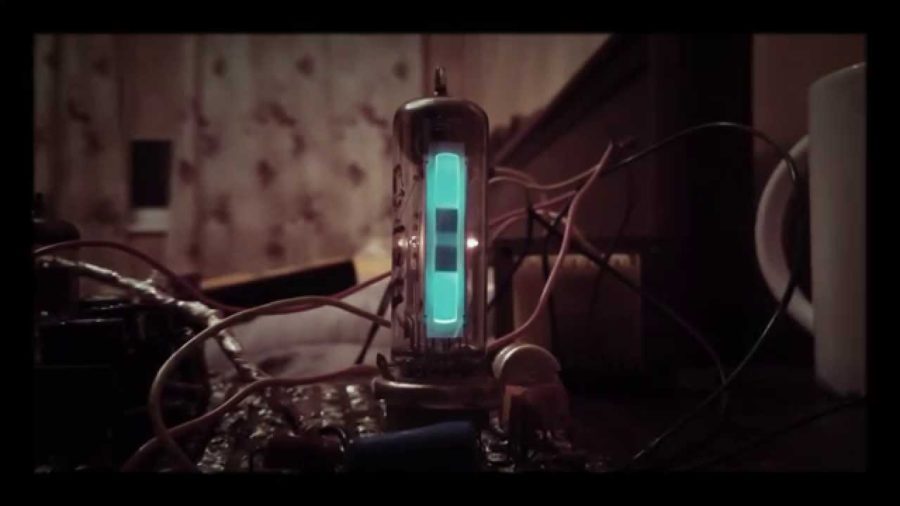
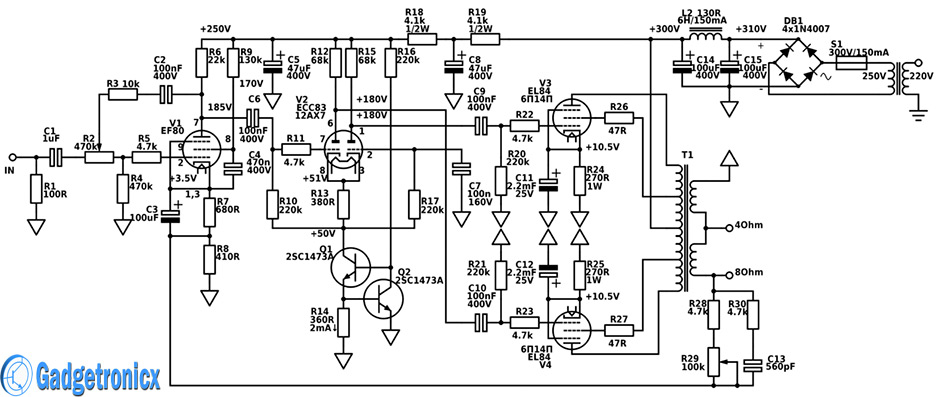
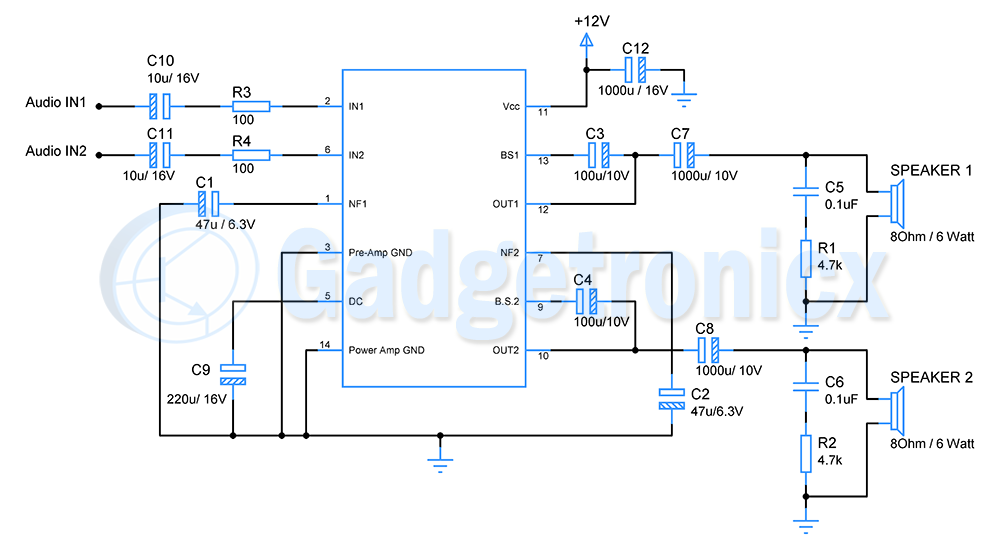
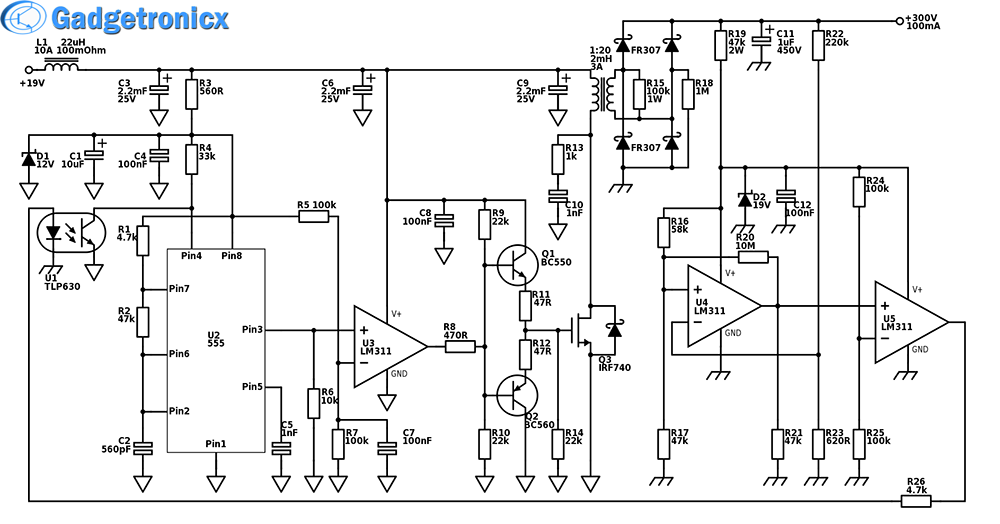
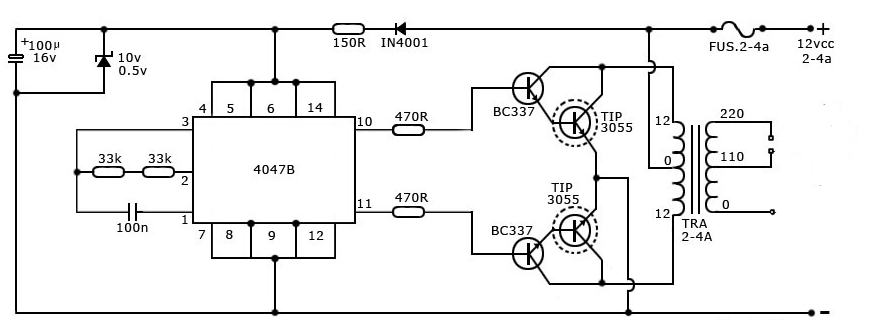
an amplifier is a term which is used in analog and digital communication field it is used to improve the damaged signal like audio or any analog signal.